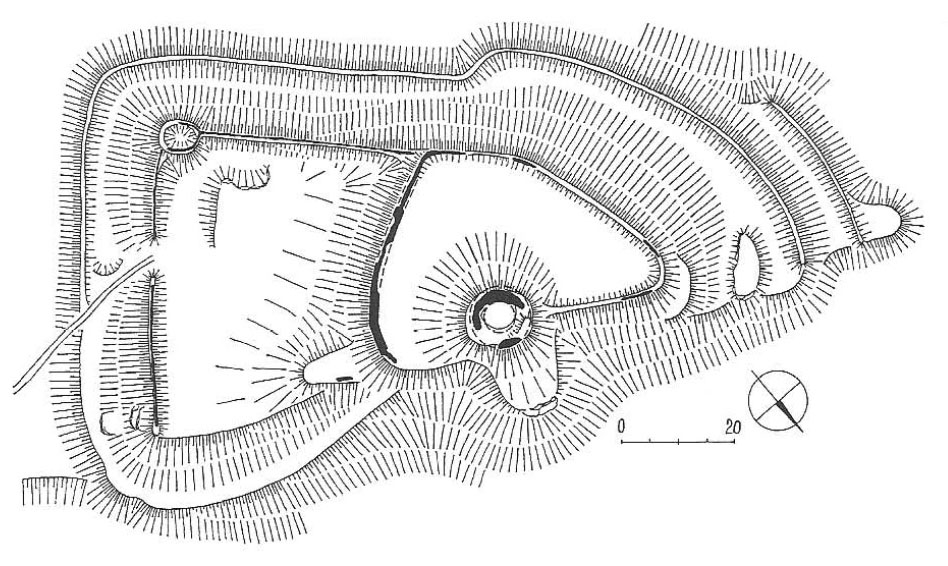History
In 1283, the Hungarian King Ladislaus IV, in merit for loyal service, gave the surrounding lands to Peter Peteny, but the castle itself was probably built only at the end of the 13th century or at the beginning of the 14th century at the latest. In 1316, Peter Peteny rebelled against King Charles I and, among others, from Braničev Castle, he undertook military expeditions to the estates of royal allies. Finally, until 1321, Peter lost all his strongholds: Kysak, Jasenov, Lipovec and also Braničev. As Puruštan, the castle was mentioned in written sources in 1321, when after confiscation King Charles Robert gave it to the knights from the Baksa family. The castle was probably damaged during the fighting, but it operated until the 15th century, changing its owners several times. At that time, the hard-to-reach stronghold, which was located off the beaten tracks, was abandoned.
Architecture
The main part of the castle was a cylindrical tower with a diameter of 11 meters and a wall thickness of about 2.5 meters, placed at the highest point of the site. Its large internal space probably also provided housing conditions, which was important due to the lack of other stone buildings. Its protection was provided by a defensive wall with a thickness of 1.8 meters, separating an approximately triangular courtyard with rounded corners. On the south-eastern side, further fortifications formed a trapezoidal outer bailey. In its southern corner a cylindrical tower was placed, which flanked the entrance gate. On the west, south and south-east sides, the outer defense zone was a ditch and an earth rampart. On the west side, the ditch was up to 30 meters wide. On the north-west side in the ditch there was a rock block, probably used to place a bridge on it connecting the castle fortifications with the crown of the earth rampart. Earth ramparts were doubled on this section.
Current state
The castle has not survived to modern times. Only relics of the southern defensive wall and the main tower are visible. Admission to the ruins area is free.
bibliography:
Bóna M., Plaček M., Encyklopedie slovenských hradů, Praha 2007.
Sypek A., Sypek.R., Zamki i obiekty warowne Słowacji Wschodniej, Warszawa 2005.

